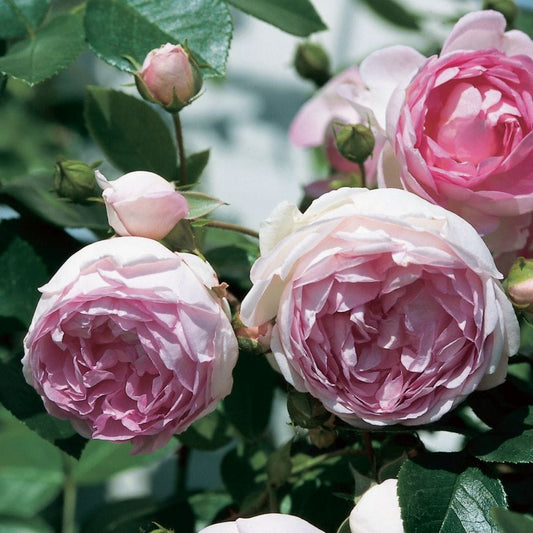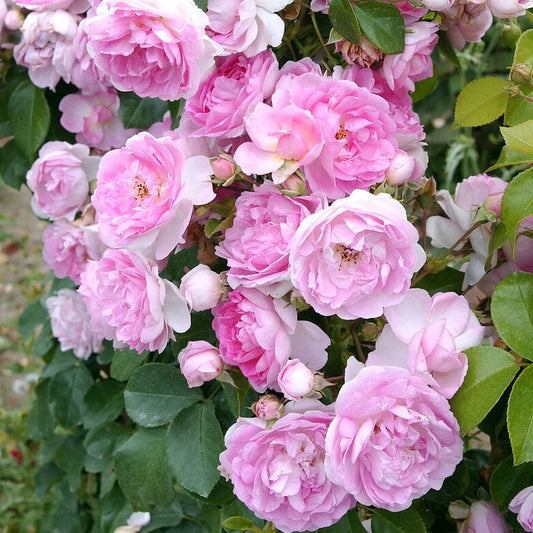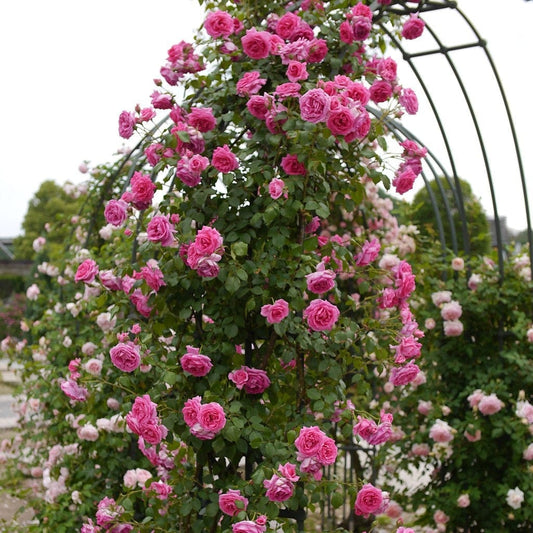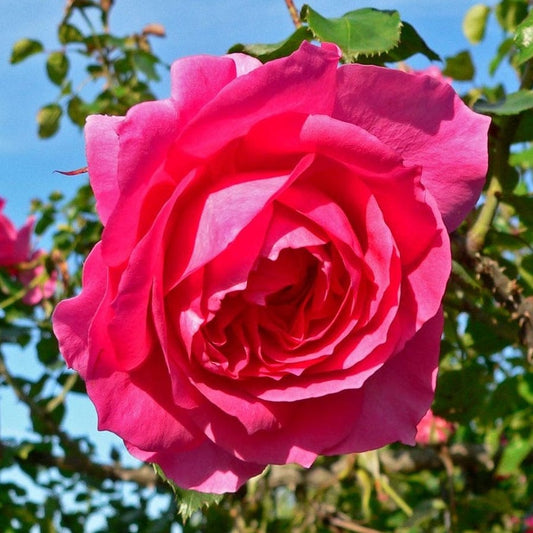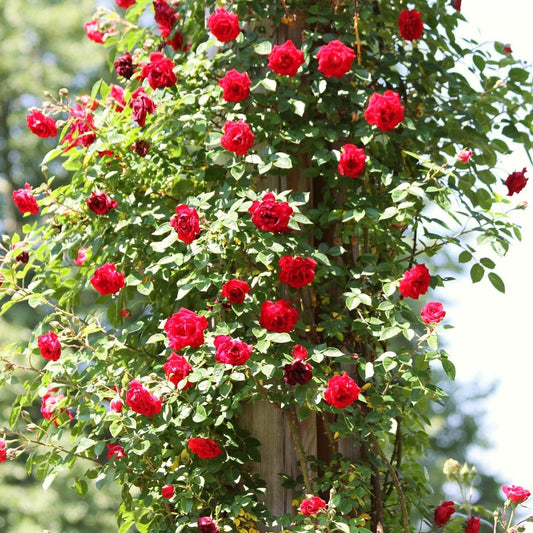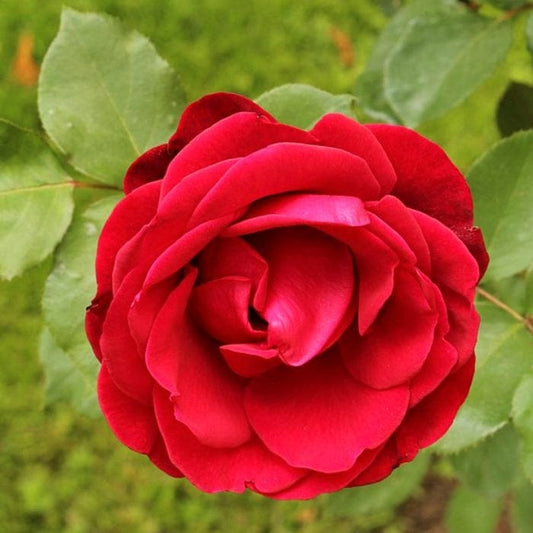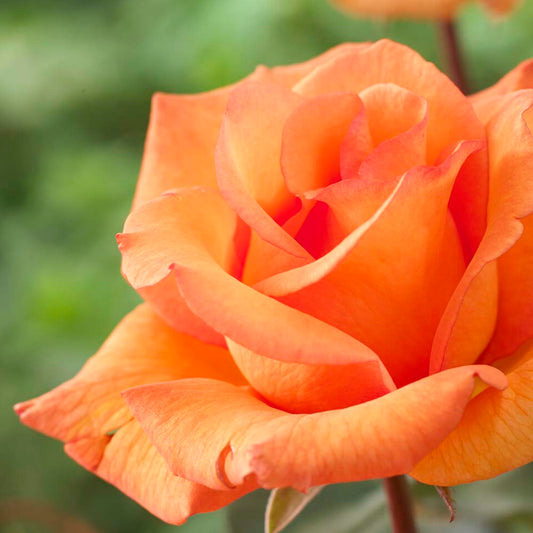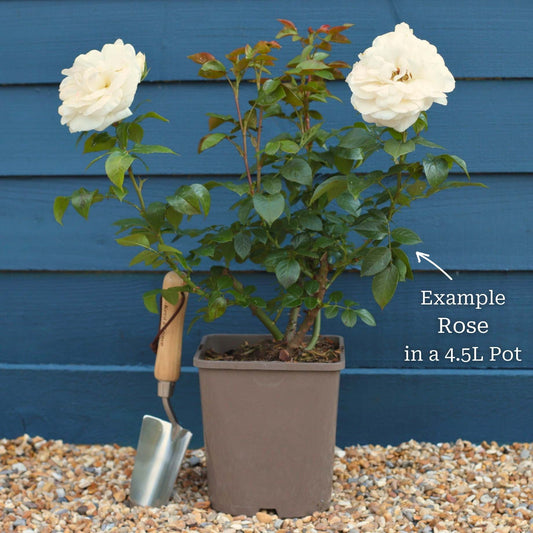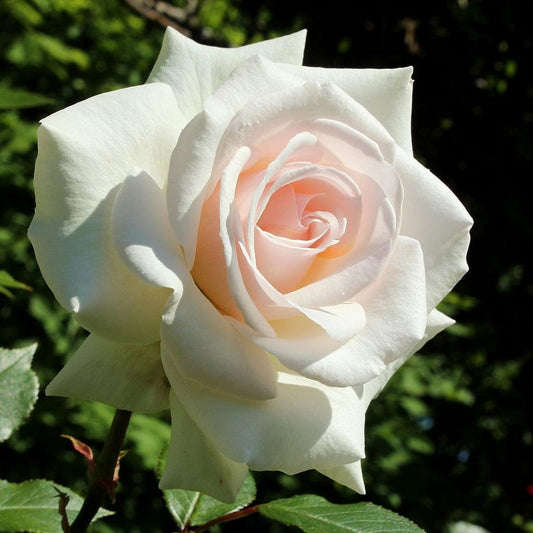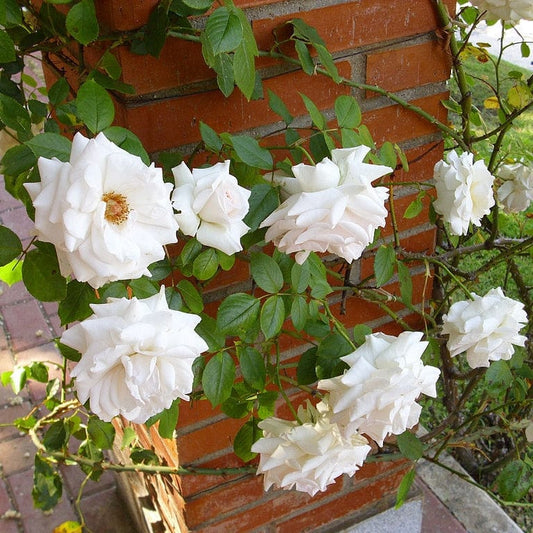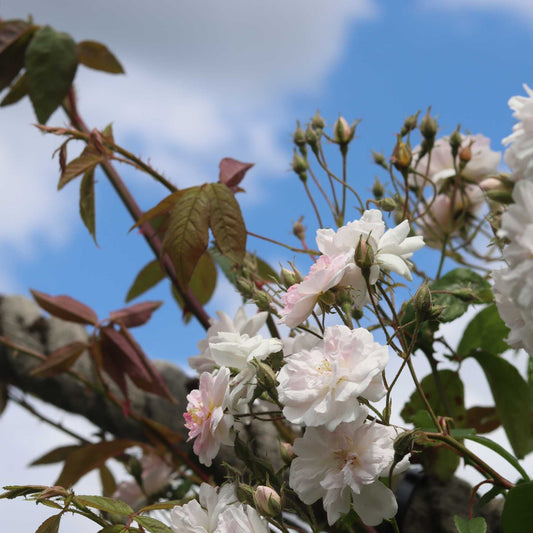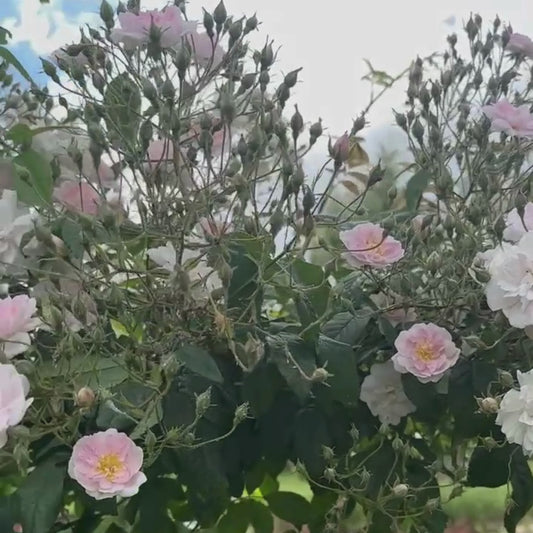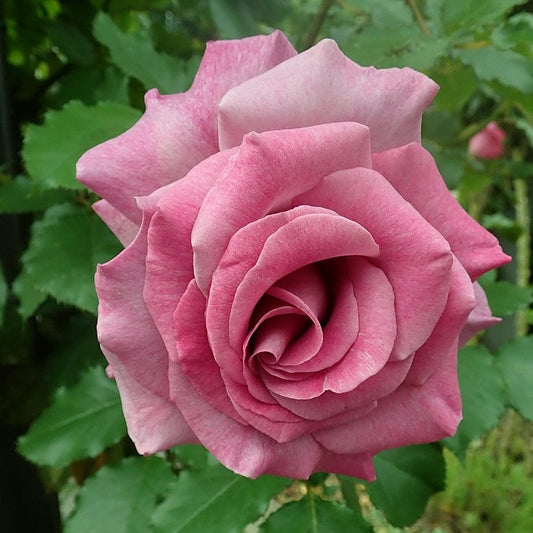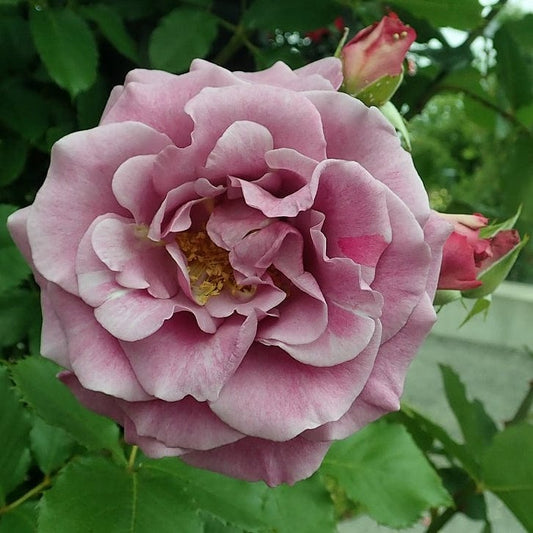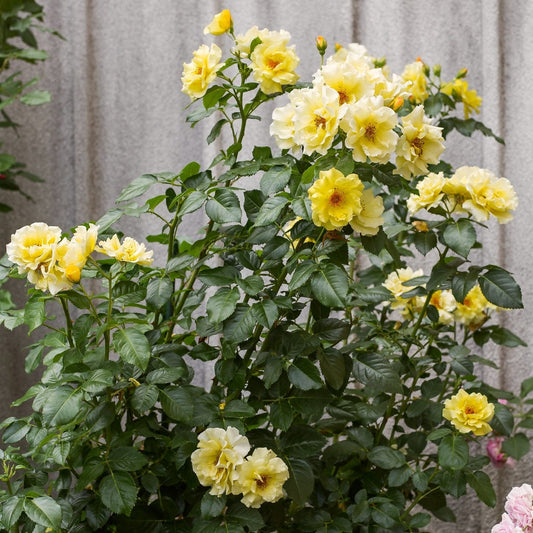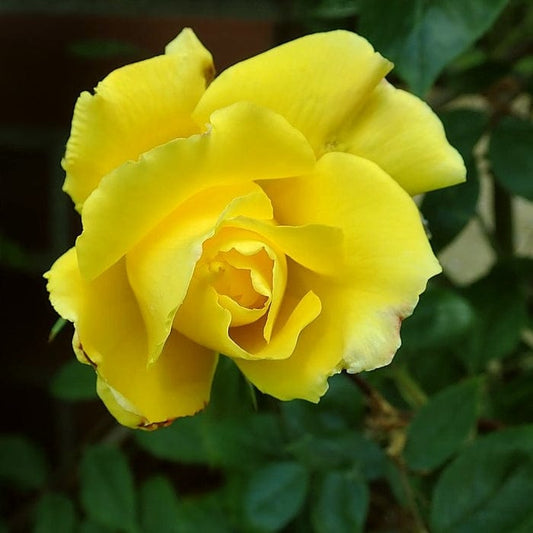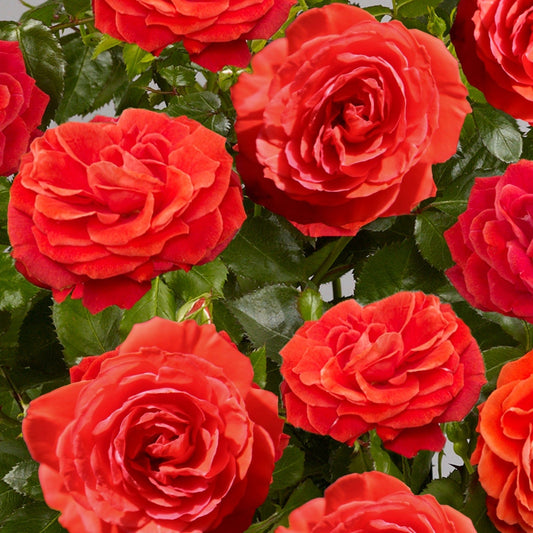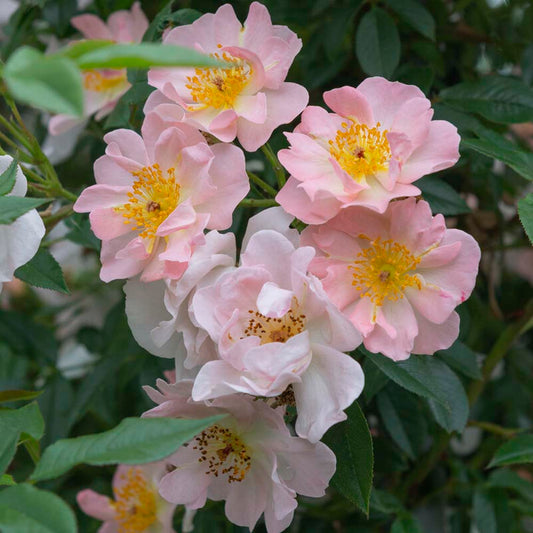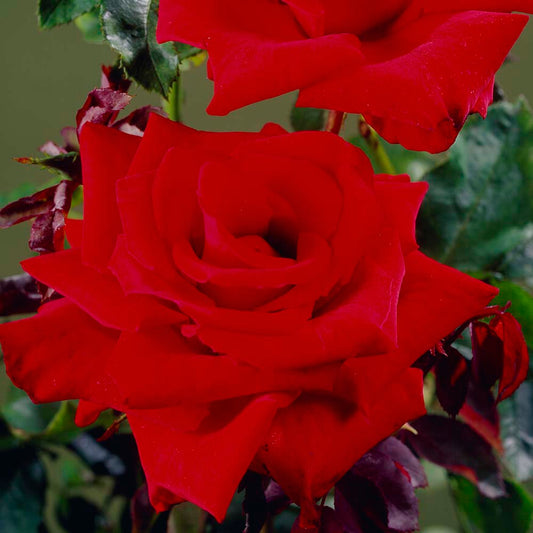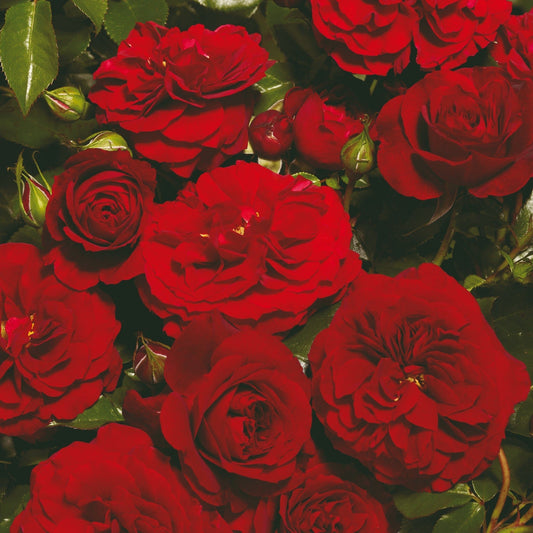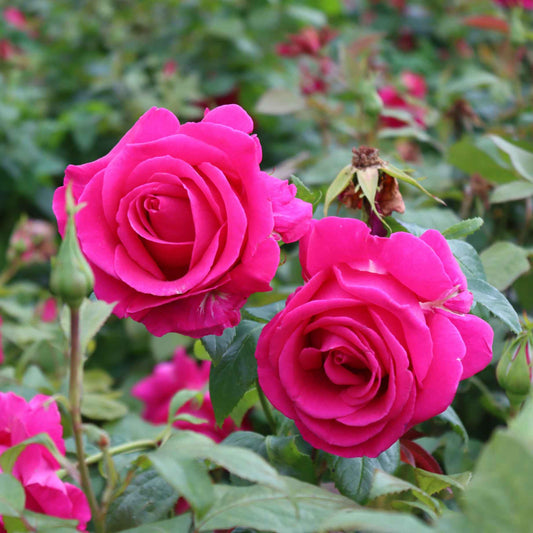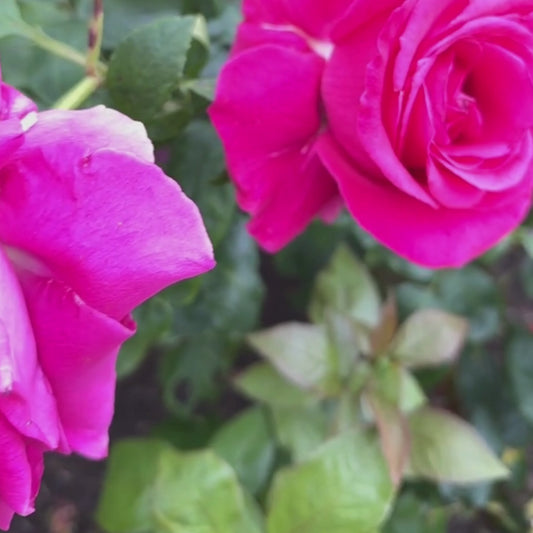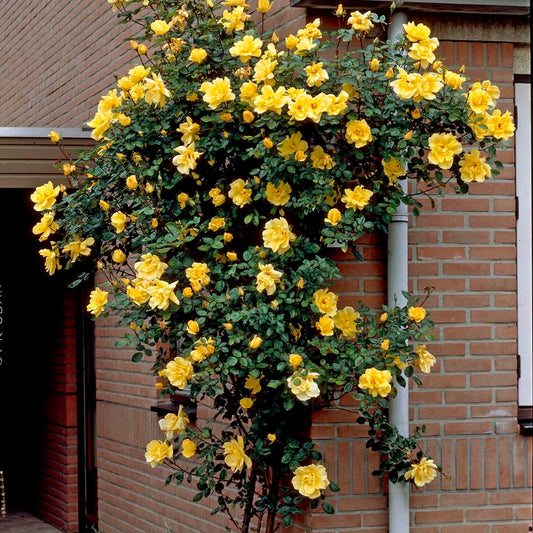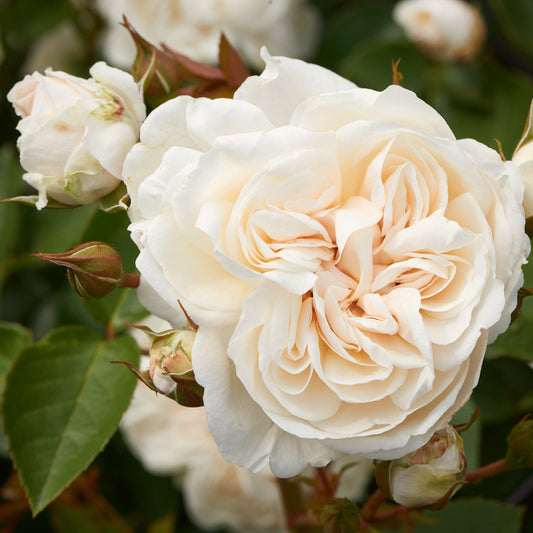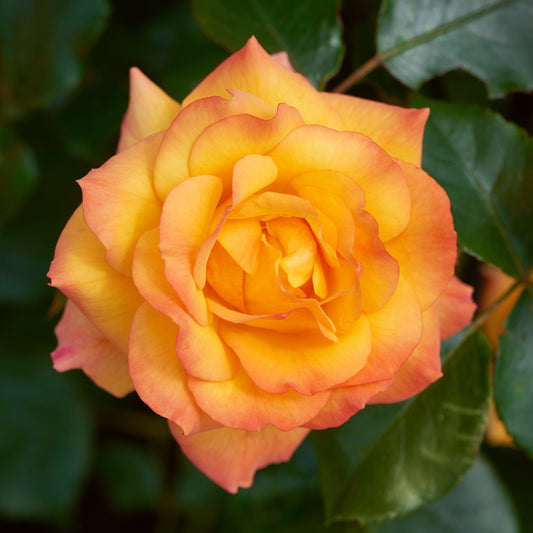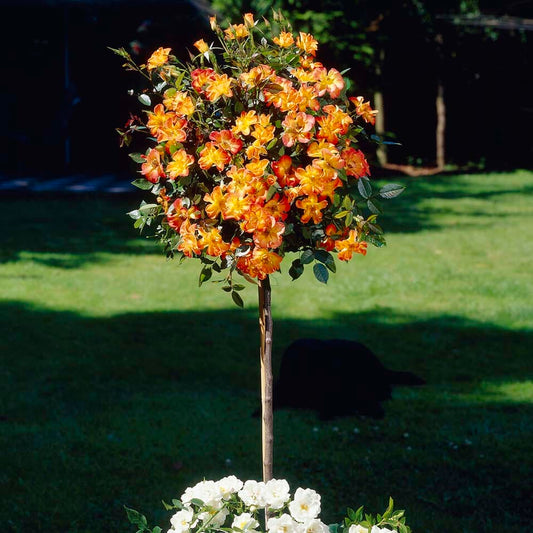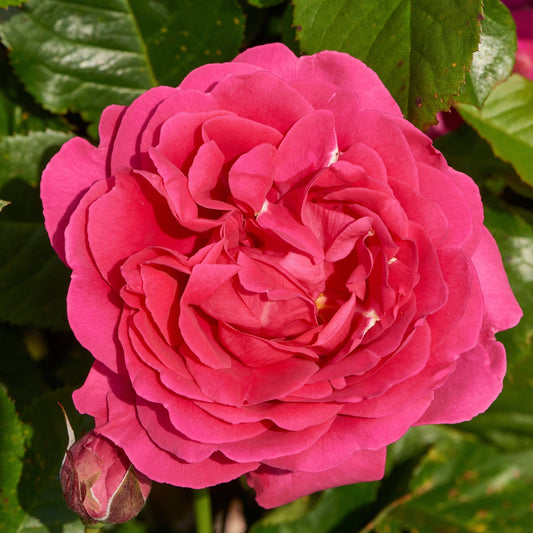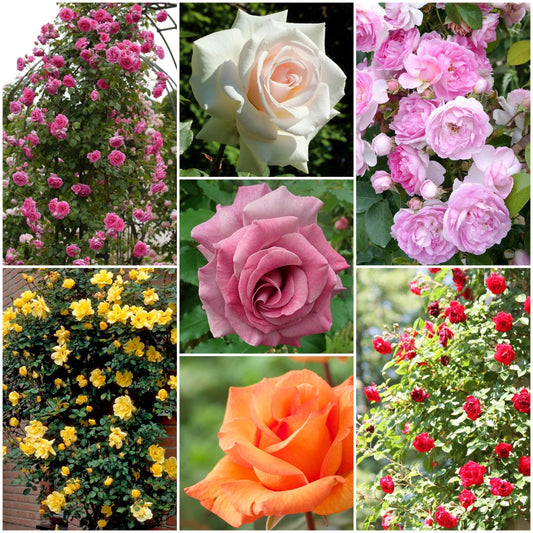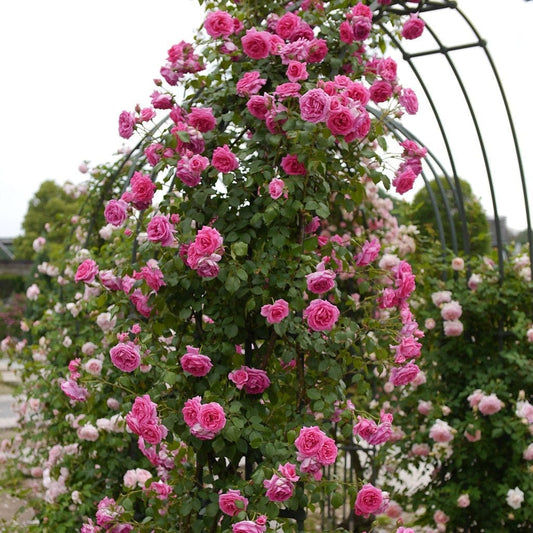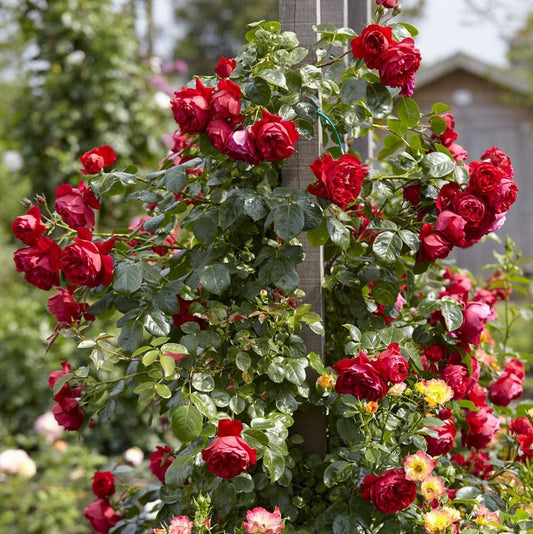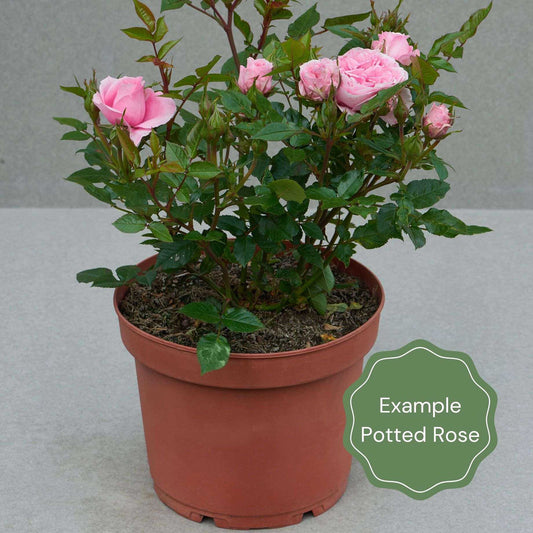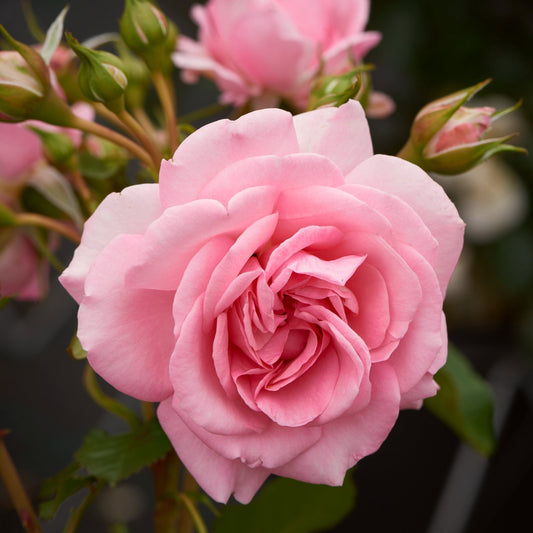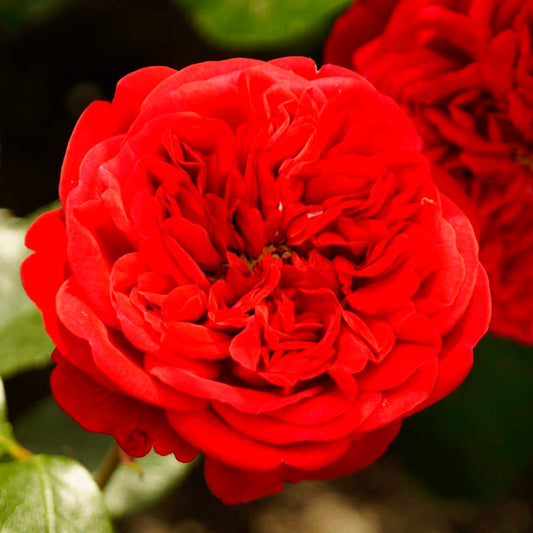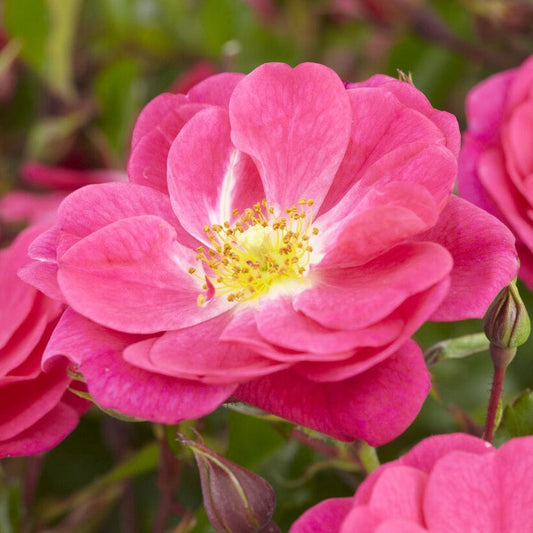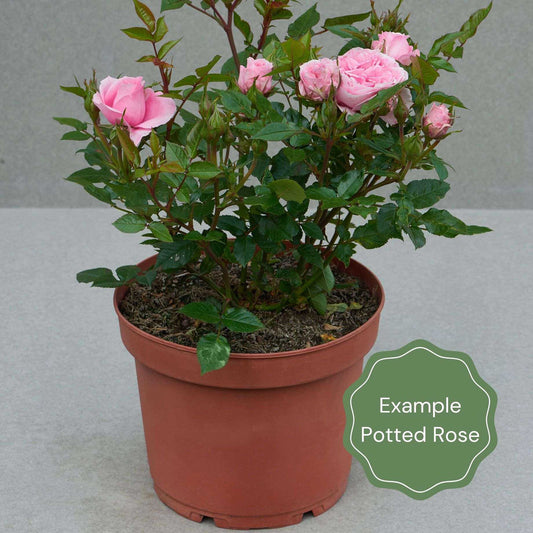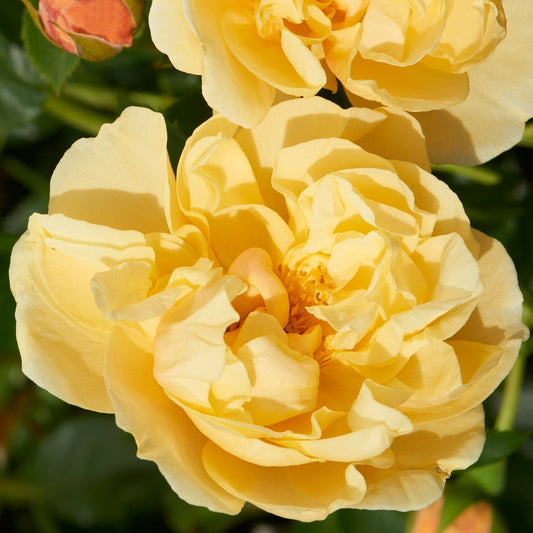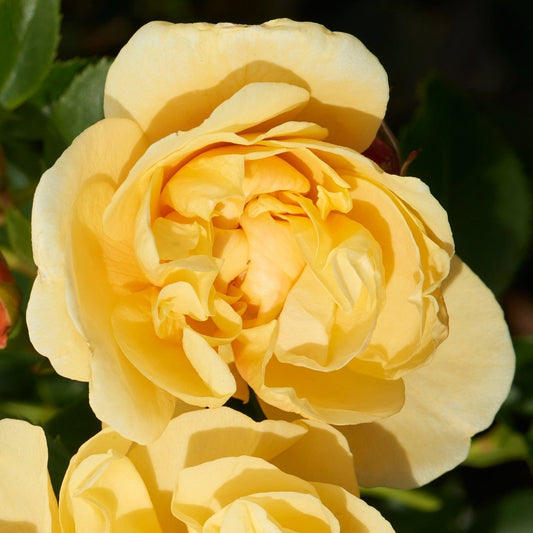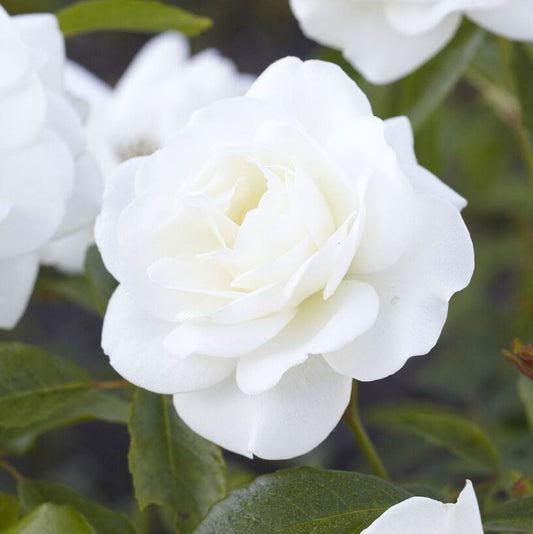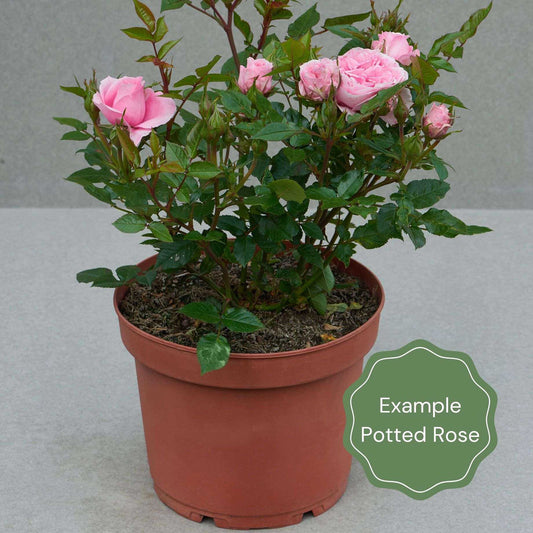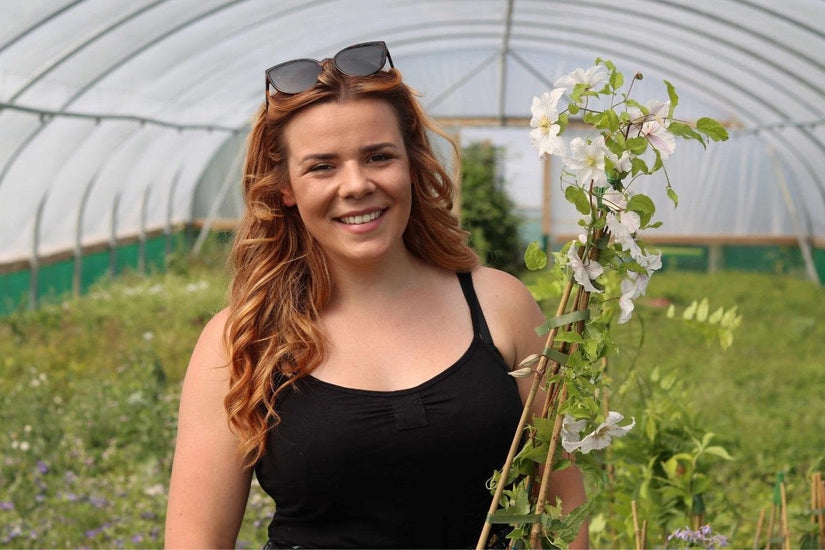Collection: Climbing Roses
Beautiful, long-lived and fragrant climbing roses are the perfect plants to grow up walls, fences, pergolas and more. Many of them can be grown in pots, making them ideal for patios and smaller gardens. Repeat flowering for colour all summer long, climber roses are an essential part of a formal garden. Team them with late-flowering clematis to extend the season or with grasses and evergreens for a fresh contemporary look.
Need help picking?-
Regular price From £36Regular price Sale price From £36
'Jasmina' Climbing Rose
Lilac-pink climbing rose
- Abundant lilac-pink cup shaped roses
- Strong fruity fragrance with notes of pear
- Repeat flowering: May to October
- Suitable for partial shade
2 options available
-
Regular price From £25Regular price Sale price From £25
'Parade' Climbing Rose
Old Rose fragrance
- Large clusters of deep carmine pink blooms
- Strong Old Rose fragrance
- Repeat flowering: May to October
- Perfect for doorways, walls and large arches
Currently out of stock
-
Regular price From £28Regular price Sale price From £28
'Don Juan' Climbing Rose
Seductive red climbing rose
- Large red full flowers
- Strong, sweet fragrance
- Repeat flowering: May to October
- Spectacular when trained on pergolas
Currently out of stock
-
Regular price From £28Regular price Sale price From £28
'Scent from Heaven' Climbing Rose
Our growers' pick for perfume
- Orange double blooms
- Strong, rich fruity fragrance
- Repeat flowering: June to September
- Rose of the Year 2017
Currently out of stock
-
Regular price From £28Regular price Sale price From £28
'Swan Lake' Climbing Rose
A graceful modern climber
- Light power pink double blooms
- Slightly fragranced
- Repeat flowering: May to October
- An enchanting climber for walls and fences
Currently out of stock
-
Regular price From £28Regular price Sale price From £28
'New Dawn' Climbing Rose
Sweetly fragrant and versatile
- Soft pink double blooms
- Sweetly fragrant with fruity notes
- Repeat flowering: May to October
- Twine around arches and doorways
Currently out of stock
-
Regular price From £28Regular price Sale price From £28
'Violette Perfume' Climbing Rose
Famously fragrant
- Large cup-shaped lilac blooms
- Famous for its gorgeous scent
- Repeat flowering: May to October
- Extremely hardy
Currently out of stock
-
Regular price From £28Regular price Sale price From £28
'Golden Showers' Climbing Rose
Grow sunny roses around the door
- Golden yellow double blooms
- Light, sweet fragrance
- Repeat flowering: May to October
- Perfect for scrambling over doorways
Currently out of stock
-
Regular price From £28Regular price Sale price From £28
'Liwa Courtyard®' Climbing Rose
Free-flowering, fiery red roses
- Semi-double orange-red blooms
- Subtle fragrance
- Repeat flowering: May to October
- Perfect for pergolas and pots
Currently out of stock
-
Regular price From £28Regular price Sale price From £28
'Open Arms' Climbing Rose
A classic, compact climber
- Shell pink, semi-double roses
- Lightly fragranced
- Repeat flowering: June to November
- RHS Award of Garden Merit winner
Currently out of stock
-
Regular price From £28Regular price Sale price From £28
'Love Knot' Climbing Rose
Perfect around your door
- Clusters of vibrant red double roses
- Subtly scented
- Repeat flowering: June to October
- RHS Award of Garden Merit winner
Currently out of stock
-
Regular price From £28Regular price Sale price From £28
'Farruca Courtyard®' Climbing Rose
Roses like they used to be!
- Large, fully double blooms in a soft dark red
- Mildly fragranced
- Repeat flowering: May to October
- Neat and compact, perfect for patios!
Currently out of stock
-
Regular price From £28Regular price Sale price From £28
'Antike' Climbing Rose
A showstopping climber
- Deep, cup-shaped full blooms in a dusky pink
- Lightly fragranced
- Repeat flowering: May to October
- Perfect for a sunny wall or doorway
Currently out of stock
-
Regular price From £28Regular price Sale price From £28
'Gardeners' Glory' Climbing Rose
Multi award-winning climber
- Clusters of bright yellow double blooms
- Rich, strong fragrance
- Repeat flowering: May to October
- RHS Award of Garden Merit
Currently out of stock
-
Regular price From £28Regular price Sale price From £28
'Eisa Courtyard®' Climbing Rose
Glorious and elegant
- White and cream double blooms
- Subtly scented
- Repeat flowering: May to October
- Compact and perfect for patio pots
Currently out of stock
-
Regular price From £28Regular price Sale price From £28
'Redova Courtyard®' Climbing Rose
Sunrise in a rose
- Double blooms in warm yellows and reds
- Light, sweet fragrance
- Repeat flowering: May to October
- Ideal for fences, walls and pergolas
Currently out of stock
-
Regular price From £28Regular price Sale price From £28
'Warm Welcome' Climbing Rose
Masses of warm, bright roses
- Open orange and red flowers
- Light, fresh fragrance
- Repeat flowering: June to September
- RHS Award of Garden Merit winner
Currently out of stock
-
Regular price From £28Regular price Sale price From £28
'Pasillo Courtyard®' Climbing Rose
Deep pink double blooms
- Strong, deep pink double blooms
- Subtle, sweet scent
- Repeat flowering: May to October
- Very compact patio climber, ideal for pots
Currently out of stock
-
Regular price £75Regular price
£84Sale price £75Repeat Flowering Climbing Rose Collection
Blooms all season long!
- A glorious variety of climbing roses
- Perfect for pergolas, walls and fences
- Full sun is best, part shade is fine, too!
- Flowers over and over all summer long
Currently out of stock
-
Regular price From £36Regular price Sale price From £36
'Florentina' Climbing Rose
Crimson red climbing rose
- Nostalic, globe-shaped roses in a deep red
- Subtly scented
- Repeat flowering: May to October
- Winner of the ADR for the healthiest roses
Currently out of stock
-
Regular price From £28Regular price Sale price From £28
'Mamma Mia Courtyard®' Climbing Rose
Prolific blooms in powder pink
- Powder pink ruffled blooms
- Wild rose scent
- Repeat flowering: May to October
- Twine around pergolas and fences
Currently out of stock
-
Regular price From £28Regular price Sale price From £28
'Deep Love' Climbing Rose
Vibrant climber, ideal for pots
- Densely packed, raspberry red roses
- Light, fresh fragrance
- Repeat flowering: May to October
- Grows up to 3m high
Currently out of stock
-
Regular price From £36Regular price Sale price From £36
'A Rose for Heather' Climbing Rose
Perfect for pergolas
- Mid-pink, semi-double roses
- Strongly scented
- Repeat flowering: May to October
- A magnet for pollinators
Currently out of stock
-
Regular price From £28Regular price Sale price From £28
'Mapale Courtyard®' Climbing Rose
Clusters of warm golden yellow
- Ruffled, golden yellow roses
- Subtle wild rose fragrance
- Repeat flowering: May to October
- Ideal for small spaces
Currently out of stock
-
Regular price From £36Regular price Sale price From £36
'Alaska' Climbing Rose
Snowy white climbing rose
- Clusters of double creamy white flowers
- Subtly sweet fragrance
- Repeat flowering: May to October
- Compact and easy to maintain
Currently out of stock
Cheltenham
Meet Mollie
Climbers grown by specialists at the height of their game
What does it take to grow the strongest and best climbing plants in the show tent? Organic fertilisers, natural pest control and years of dedication from Mollie, our expert grower in Worcestershire. Professionally pruned and checked by hand, they’re guaranteed to put on a gold standard display in your garden, too.
Need help picking?
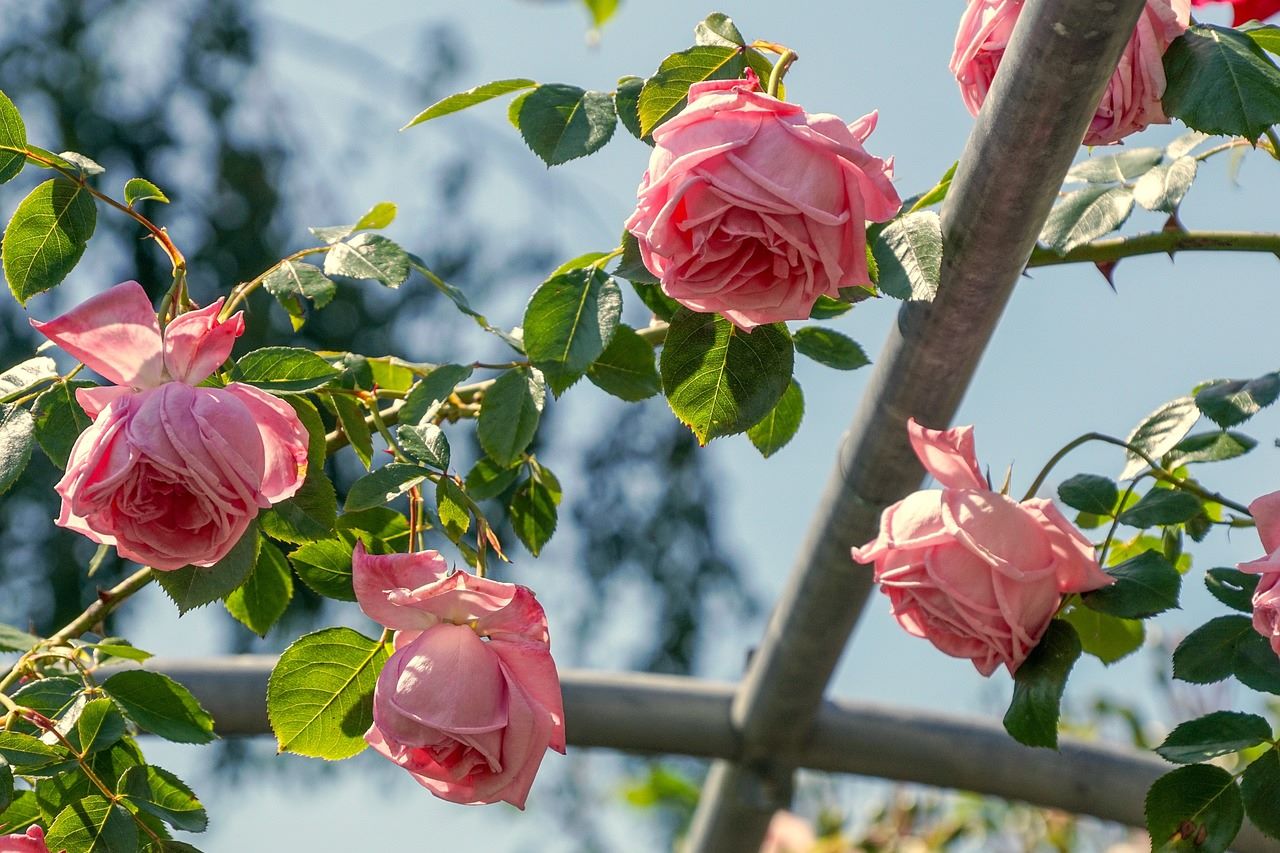
Which climbing rose?
Climbing roses vary enormously in height, growing to between 1.5 and 6m. The larger varieties, such as Gardener’s Glory and Parade, are ideal for walls, arches, pergolas and doorways. If you’re short on space or want a lower maintenance option, look for a compact or courtyard variety, which can be grown in a pot. Rambling roses are very similar to climbing roses but grow in a less structured way and flower only once, in June or July. These are a great choice for quickly covering a wall or structure.

Planting schemes and partners
Climbing roses are often used in formal gardens to form a canopy over walkways and arbours - or you might have seen them trained around a cottage door. They’re equally effective in more contemporary designs, growing up a pergola or in pots on a balcony. Their perfect companions are vigorous Viticella clematis varieties in jewel colours like Polish Spirit and Madame Julia Correvon. Yellow honeysuckle also looks lovely with orange roses.

Growing tips
Grow climbing roses in any well-drained, fertile soil in full sun and feed twice a year with a rose fertiliser. They need training when young by using supports and benefit from regular pruning - this should be done while the plant is dormant between late winter and early spring. (The exception is rambling roses, which should be pruned straight after flowering.) Climbing roses flower best in full sun, but they can cope with a little shade in the afternoons. Feed them with a sprinkle of rose food or tomato feed twice a year - once in spring before the new growth starts and again in July. Deadhead your roses regularly for repeat flowering throughout the summer.
Climbing Rose FAQs
What are climbing roses?
Climbing roses have large or clustering flowers on vigorous twining stems that can reach 6m in height. They grow quickly, blooming repeatedly throughout summer and early autumn, and are an ideal feature for trellises, obelisks, walls and fences.
What’s the difference between climbing and rambling roses?
Climbing roses have more structured growth and produce larger flowers, but fewer of them, most being scented. Where climbing roses tend to grow (roughly) in one direction, ramblers are more informal and less structured. They’re often found on walls, structures or scrambling through tree branches. They flower just once a year - usually in June - but it’s pretty spectacular when they do.
Where should I plant climbing roses?
The best position for a climbing rose is in a warm, sheltered spot with at least six to eight hours of sunlight per day throughout the growing season, but they will also be fine with a little light shade. You can get some planting design tips in our rose garden feature.
What kind of soil is best for climbing roses?
The best soil for climbing roses is well drained and fertile - a soil pH between 6.0 and 6.5 is best. To enrich your soil, dig in plenty of well rotted manure or compost before planting.
When is the best time to plant climbing roses?
Bare root climbing roses should be planted between November and March, on a day when the soil is neither frozen nor waterlogged. Potted climbing roses can be planted at any time of year.
How do I plant climbing roses?
To plant your climbing rose, dig a hole twice as wide and deep as the rose's roots. For bare root roses, you’ll need to soak them in a bucket of water for a couple of hours beforehand. Position your rose in the centre of the hole, fill in with soil or compost and give it a good watering. For bare root roses, the graft union (the bump on the stem where the rose stem meets the roots) should be at or slightly below the soil level. For potted roses the soil level should be level with the soil level it had in the pot.
How should I support climbing roses?
You’ll need to give your climbing rose some support to climb up - this can be a trellis, arbour, arch, obelisk, fence or a wall with wire supports. Tie in the stems of your rose gently to the support network with plant ties or garden wire, and train new stems to grow up the supports as they emerge.
How often should I water climbing roses?
Climbing roses need to be watered deeply and regularly when they’re newly planted and also during hot or dry weather. The soil should always be moist but not waterlogged - a layer of mulch around the base of the plant can help keep the moisture in.
Do climbing roses need fertiliser?
Feed your climbing rose during the summer and when the roses are in flower, with a high nitrogen food - this can be specialist rose feed or tomato feed. Your roses will also benefit from a mulch of farmyard manure over winter, which breaks down and helps to feed the plants in spring.
How do I prune climbing roses?
Prune your climbing roses in late winter or early spring before the new growth emerges. Remove dead, diseased, or damaged wood, and trim back any overly long canes to promote vigorous growth and flowering. Rambling roses should be pruned in August or September as soon as the flowers have finished. For both types, deadhead spent flowers regularly to promote continuous blooming throughout the growing season.
Happy plants make happy customers
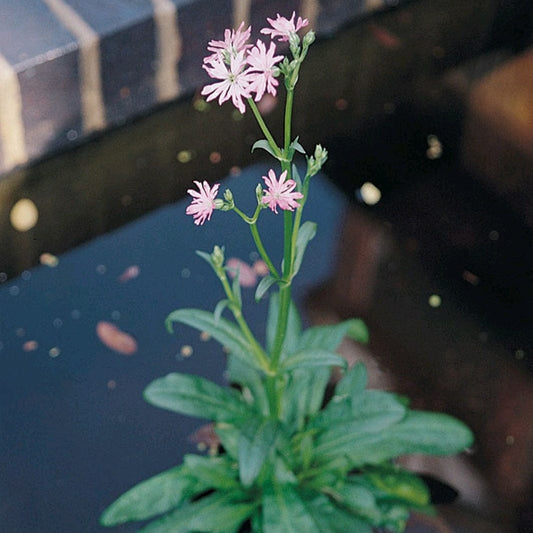
Plants arrived in great condition and very promptly. Well established - much better than the ones I got at my local garden centre.
Monica Spence
| 24 May
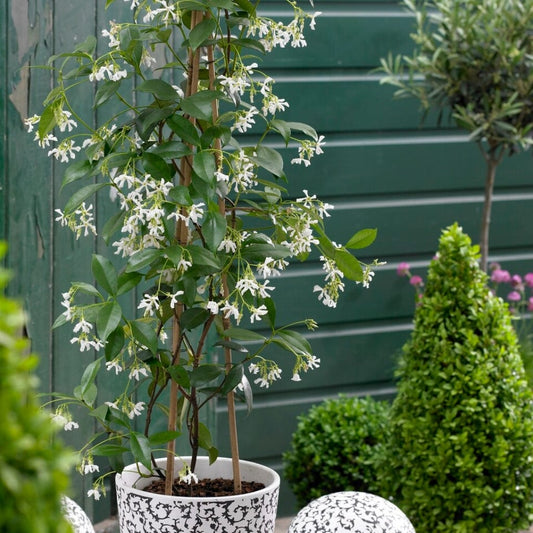
Yet again this company delivered good healthy plants, exactly as shown in photos, well packaged and within delivery time quoted. Recommend!
Jacqueline Burgess
| 2 Jun
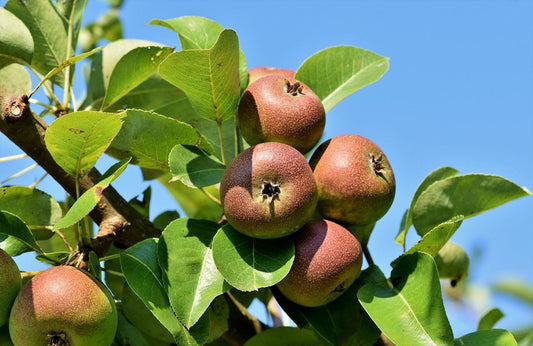
I continue to be so impressed with Roots. Their customer care, knowledge of their subject: from planting hedges to pruning roses and more, has been a great support.
Judy Lane
| 23 Oct
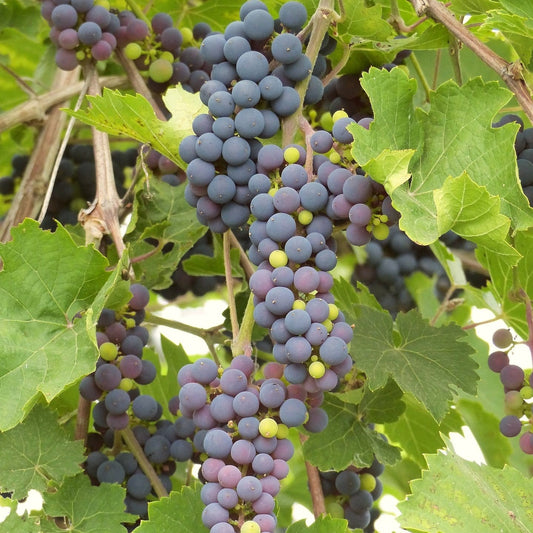
The plant arrived looking vigorously healthy, which brings a smile to your face, extremely well protected in its packaging.
Martyn Hill
| 5 Jul
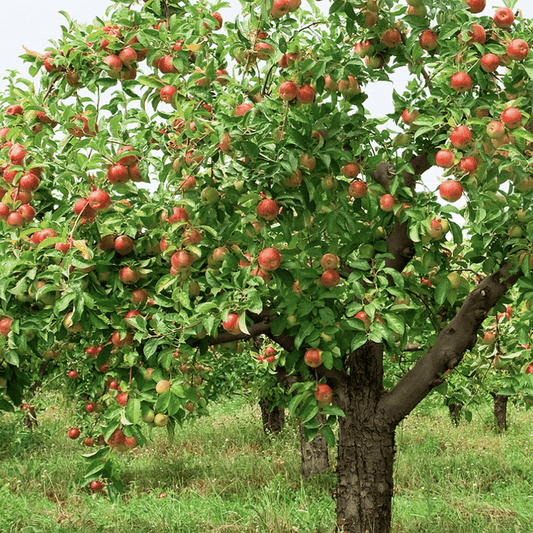
As a non-gardener, I found my whole experience brilliant. Great information & advice available on the website, great range of products & prices are brilliant.
John-Paul
| 22 May

Wonderful plants and great customer service... really surprised to find that the plants are better than those you would get at your local garden centre.
Gavin Wilcock
| 8 Nov
Fighting plastic waste
Delivering fresh from the nursery
Supporting UK growers

